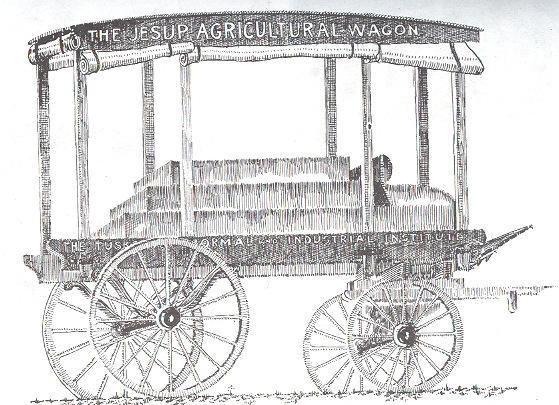What can we learn from Dr. George Washington Carver’s Movable School?
George Washington Carver was born the son of a slave. Raised in Missouri, Carver grew up in an era of change on America. Slavery was just abolished, and the many Blacks lacked the skills necessary to compete in a free enterprise system. Carver was at a further disadvantage because he suffered from health problems. At a young age, he came down with a severe case of whooping cough. He was too frail to do the normal work that was expected at his age. He therefore wandered about discovering the many facets of nature. He also enjoyed painting. However, when it came to education, he realized that he could not make a living as an artist. Carver decided to pursue a career in agriculture and went on to receive his masters from Iowa State in agriculture.
In April of 1896, just after completing the requirements for his masters of science degree in agriculture, Carver received a letter from Booker T. Washington, requesting he develop an agricultural department at Tuskegee. Booker T. Washington has come to the realization that since 85% of the Negroes on the Gulf States were farmers, Tuskegee’s greatest need was agricultural department.
When Carver arrived, he discovered that the soil had lost its nutrients due to cotton, thus he planted peanuts to increase the nitrogen in the soil. Once the soil was prepared from the peanuts, he planted other crops. This process, know as “crop rotation” was invented by Dr. Carver, and used throughout the South, along with growing peanuts to fertilize the soil.
In fact, so many grew peanuts, that instead of letting them rot away, Carver invented over 385 products from the peanut. These he called, “waste products,”became products like peanut butter, peanut oil, and so, many more that it was said that from the products Carver developed, the South grossed over $200,000,000 annually.
At the age of sixteen, Thomas Monroe Campbell ran away from home in Georgia, to attend Tuskegee in 1899. Upon arriving, he worked and volunteered at Tuskegee to pay his expenses. he studied under Dr. Carver, and other scholars, before he began to travel and teach others.
After graduating from Tuskegee,Thomas Campbell met with Booker T. Washington to discuss a new project. Washington said, ” I want you to begin a new and rather peculiar type of work…the reason I am anxious for you to begin the work is that the farmers who need instructions most, I fear, are not getting it. We must take, in a larger measure, the information to them…use actual demonstrations rather than speech making only …instead of telling the farmer what to do, show him how to do, and he will never forget it.” This was the beginning of the Movable school.
Thomas Campbell’s travels throughout the South are well documented in his autobiography called, The Movable School Goes to the Negro Farmer. By the time the idea of a traveling school became a reality, he had built the kind the type of strong rapport with Booker T. Washington that would make him the first paid demonstrator of the movable school. Afterwards, a wagon named Jesup was funded to transport the movable school about the South.


Recent Comments